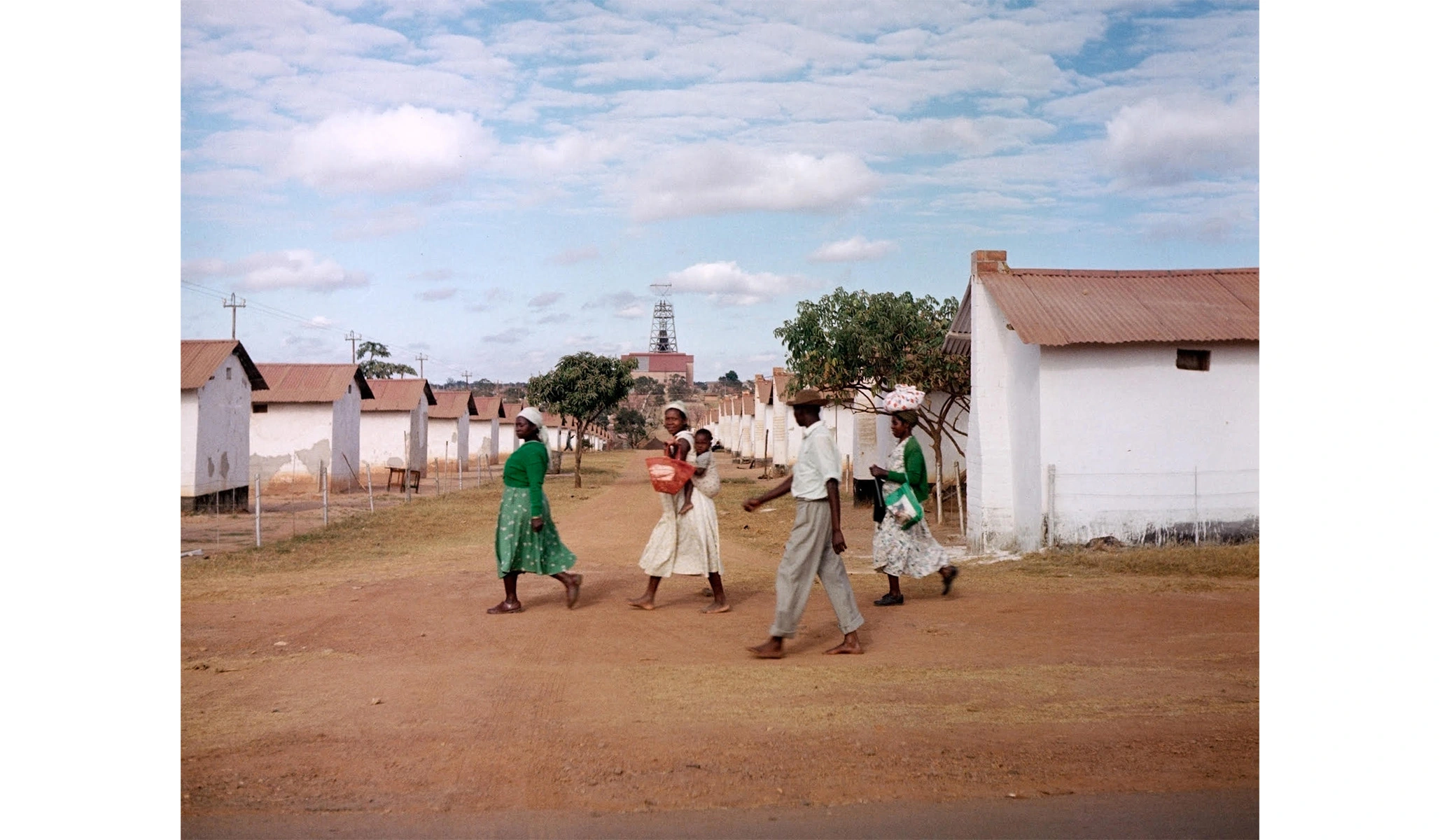“Outside the Frame: Todd Webb in Africa” is a captivating new exhibition at the Portland Museum of Art in Maine that I had the opportunity to visit last month. Although my annual vacation to Mount Desert Island in August usually takes me to Maine, I hadn’t been to Portland since 2019 when I wrote a story about the talented young artist Henri Paul Broyard. Despite the long drive from Vermont to Acadia, the allure of Portland’s funky art scene, delightful restaurants, scruffy atmosphere, and refreshing sea air drew me in. Over the years, Portland has undergone significant redevelopment, attracting an influx of new residents, including professionals and the affluent. The city has retained its authentic charm while receiving a well-deserved facelift. Conversations with new Mainers and former New Yorkers revealed a common sentiment: their blood pressure had noticeably decreased since moving to Portland.
The exhibition, “Todd Webb in Africa,” showcases a recently discovered collection of color photographs taken by Todd Webb (1905–2000) during his assignment for the United Nations in 1958. Webb was tasked with capturing everyday life in various parts of Africa, amidst the continent’s independence movements and the U.N.’s hopes for Western-style economic development and improved living conditions.
Webb, a talented artist with an impressive lineage, was mentored by renowned photographers such as Berenice Abbott, Walker Evans, Harry Callahan, Ansel Adams, Helen Levitt, Beaumont Newhall, and Roy Stryker. In fact, he even taught Georgia O’Keeffe the art of photography in the mid-1950s, which led her to pursue a successful career as a virtuoso photographer. Webb’s photographs, like those of the best American documentary and street photographers, have a raw honesty that immerses viewers in the scenes he captures.
While Webb is best known for his New York street scenes from the late 1940s, his recognition waned after his semi-retirement in the 1970s, during which he settled in Portland. It was only within the last decade that his work was rediscovered, marking an exciting chapter in his artistic journey.
During his five-month stay in Africa, Webb explored and photographed regions such as Togoland, Ghana, Sudan, Somaliland, the Federation of Rhodesia, Tanzania, Zanzibar, and Kenya. This period coincided with the rapid collapse of the European colonial system following World War II, starting with India’s independence and followed by the liberation movements in French West Africa and the British colonies from Nigeria and Kenya to Botswana in the south.
The 1950s and 1960s were generally optimistic times worldwide, a stark contrast to the prissy, finger-wagging atmosphere of today. It is important to remember that the U.N. was once a force for progress and opportunity, rather than the racket it has become. Webb’s photographs in the exhibition capture this hopeful era, providing a glimpse into the lives of African people during a time of transition and aspirations for a better future.
The exhibition begins with a CIA map illustrating Africa’s political landscape in 1958 and Webb’s itinerary. As an artist, Webb seamlessly blends aesthetics with history, starting with his experiences in Togoland. His photographs exude panache and reveal his optimistic outlook. One of my favorite images depicts a group of men in white hats and frocks celebrating Election Day, with one hat boldly proclaiming “Ablode,” meaning “Freedom.” Another striking photograph showcases two confident young women in matching yellow dresses walking along a beach, creating a minimalist composition against a backdrop of ocean, surf, clouds, and blue sky. The image reminds me of the iconic model Iman.
Webb’s photographs also capture industrial scenes, where his keen eye for detail shines. Two photographs of hydroelectric power stations in Tanganyika showcase his crisp and intense style. The geometric shapes and vibrant green grass create a visually pleasing contrast. Another photograph features a Texaco gas station with a sharp-looking attendant wearing a smile. These images were the U.N.’s desired “meat-and-potatoes” shots, emphasizing everyday life and the pursuit of a modern lifestyle through development and industry.
It’s worth noting that the U.N. specifically instructed Webb not to focus on stereotypical images of bare-chested women, pygmies, roaring lions, or dancing men in grass skirts. Instead, they sought photographs that portrayed a working population eager for progress and a better quality of life. While some may criticize this approach as dismissive of the complexities of colonialism and power imbalances, Webb’s photographs reflect the aspirations of the time and the context in which he was working.
Collaboration and teamwork are recurring themes in Webb’s photographs, whether it’s riggers, miners, cargo handlers, or fishermen. He also captures local artists’ murals on buildings, an outdoor tailor measuring a woman in Tanganyika, and individuals seeking medical care or going about their daily routines. These images depict places functioning as modern societies according to the standards of 1958.
The exhibition also delves into Webb’s use of color, which was not the default palette for photography in 1958. Webb’s early color documents of African life provide a unique perspective on the continent’s vibrant culture, customs, and landscapes. However, color film and processing were expensive at the time, and manufacturers didn’t consider calibrating dark skin tones until the 1980s and 1990s. This oversight reflects racial bias in the industry, which Aimee Bessire, one of the curators, explores in her insightful catalogue essay.
While Bessire argues that color deficiencies diminish Webb’s black subjects, I find his portraits of black individuals to be personal and visually stunning. The sumptuously illustrated catalogue showcases Webb’s ability to capture the rich palette of Africa and its people.
Webb’s place in art history faced a setback in the 1970s when he sold his entire archive to an art dealer who did little to promote his work. However, Betsy Hunt, a Portland art dealer, rediscovered the archive a few years ago and now manages it along with co-director Sam Walker. The excavation of Webb’s trunks revealed a treasure trove of his art, including his post-war New York photographs and the forgotten African negatives from 1958. This serendipitous discovery has breathed new life into Webb’s legacy.
Later this year, Houston’s Museum of Fine Arts will host an exhibition on Webb and Robert Frank, showcasing their respective journeys across America. Webb’s time in the spotlight has finally arrived, and his work deserves recognition for its unique perspective on the world.

